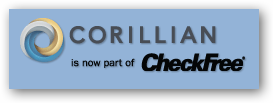The weekend was sort of a mixed bag. For every good thing that happened,
there was something bad to balance it out. Starting Friday…
Good: I finished up a huge piece of the project I’ve been working
on and checked it in before leaving work. Love that closure!
Bad: Jenn’s cat, Jack, decided to fervently clean his week-old
declawed paws and opened one up. Spent most of the night at DoveLewis
Animal Hospital getting him fixed up.
Good: My parents came over Saturday and we caught up, played some
Guitar Hero
2, and
went out to a great lunch at Costa Vida.
Bad: Determined that the cats really don’t like using the litter
box when it’s got that crappy pine
litter in it (gotta use
pellet litter while Jack’s paws heal up) and found that one of them - we
don’t know which - peed on the rug in front of the litter box rather
than peeing in the litter box.
Good: Went tooling around on Sunday and stopped by GameStop on a
whim. Found a used Xbox 360 Guitar Hero controller. Snapped that up
and busted ass home to play a little cooperative Guitar Hero with
Jenn.
Bad: Found out the tilt mechanism in the controller was bad so you
can’t turn on “star power” by tipping the guitar up in the air. (I think
it was stuck “on” because in cooperative mode it’s supposed to require
both of you to tip your guitars up to enable “star power” but I seemed
to be able to do it on my own. That said, we rebooted the console with
just the new guitar plugged in, fired up the game, and in solo mode, you
couldn’t turn “star power” on. So… bum controller.)
Good: Got a lot of chores done on Sunday. House is vaccuumed,
dusted, mopped, and generally straightened up.
Bad: Cats again decided not to pee in litter box, instead
choosing to pee on a bathroom rug. And, no, the newspaper pellet
litter isn’t any better. We tried it.
They want actual litter, not this pellet garbage.
Anyway, you see how that works. Overall, I think the weekend was good.
Jenn and I had a total blast with Guitar Hero. We played every single
song that you can unlock in Easy mode (neither of us are very good, so
Easy was right up our alley). I’ve since ordered a controller directly
from RedOctane. A little more expensive, but
at least we know it’ll work.
My aunt emailed me because my cousin is getting married this weekend
(once again, I won’t be able to make it to Code
Camp) and it turns
out that RSVPs are a source of tension. Huh. I never would have
guessed. It just
amazes me how people don’t feel that responding for an event is
important, let alone a big event like a wedding. It’s not just annoying,
it’s disrespectful to the people inviting you. It’s even worse if you
don’t respond and then you show up, or you respond saying you’ll be
there and then don’t show. And the real killer is - unless you’ve had an
event like this yourself in recent memory (because people seem to forget
what a problem the RSVPs are if it’s not recent or documented), you
won’t really understand. When it’s your money on the line and you’re
paying a decent sum of money per head, suddenly you’ll realize - “Aha!
That’s why it’s so important to respond!”
But I digress.
This week the theme is going to be “taking care of business.” This
morning already I’ve met with a repairman named Yance from Dennis’
Seven Dees because one zone of our
sprinkler was not coming on and one of the nozzles on one of the heads
was broken. Got that all fixed up in about five minutes, no problem. At
lunch today I’m heading over to H&R Block to
see how bad the CheckFree acquisition of Corillian is going to hose me
tax-wise and see if I can do anything about it.
I’m also still working (very, very slowly, but surely!) on the blog
conversion to Subtext as well as my
Xbox 360 media center solution. Oh, and CR_Documentor emulation of
Sandcastle. I think I’m going to get the blog converted over to Subtext
first, then tackle the other two.
 It’s
official -
It’s
official -